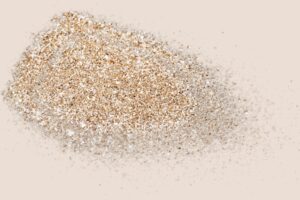Shaping Futures: The Transformative Power of Knowing the Elemental Composition of Sand
Sand, beyond its simple appearance, plays a critical role in shaping the future through its application in diverse areas and in a variety of applications due to its versatility.
 Common noticeable usages include sandboxes for children, bunkers on golf courses and landscaping needs. The unnoticeable usages are typically dependent on the specific quality of the sand which translate to the elemental make-up of the sand – more commonly known as silica sand. This higher quality of sand is used in many products and manufacturing processes including glass products, computer chips, metal castings, water filtration systems, hydraulic fracturing, and environmental protection applications to name a few.
Common noticeable usages include sandboxes for children, bunkers on golf courses and landscaping needs. The unnoticeable usages are typically dependent on the specific quality of the sand which translate to the elemental make-up of the sand – more commonly known as silica sand. This higher quality of sand is used in many products and manufacturing processes including glass products, computer chips, metal castings, water filtration systems, hydraulic fracturing, and environmental protection applications to name a few.
What Is Sand?
Sand primarily consists of tiny crystals from the quartz mineral, composed mainly of silicon (SiO2) and oxygen (O) which creates silica (Ti02). Other elements in smaller quantities can also be present in sand such as aluminum, calcium, potassium, sodium, magnesium, titanium, and iron. The presence and concentration of all these elements can vary greatly depending on the source of the sand. The presence of the various elements in the sand will determine the roll sand will play in processes, product, and innovation.
For sand to be categorized as silica sand, the material is required to contain, at the minimum 95% silicon dioxide (Si02) and less than 0.6% iron oxide. Determining the elemental composition is imperative to quality standards of products or processes.
Let’s look at how one element in a sand sample will determine the use of the sand.
The Impact of Iron
Iron content in sand is a critical factor that influences its suitability for different applications. High iron content can be beneficial or detrimental, depending on the intended use and functionality:
Coloration: Iron impurities can color sand in various shades, affecting the aesthetics of products like glass.
Magnetism: Higher iron content, such as magnetite, may exhibit magnetic properties which for many products is not beneficial.
Cement and Concrete Production: While some iron content is acceptable in these materials, too much can lead to staining and other quality issues.
Industrial Applications: Some industrial processes, like metal castings, will utilize sand with a higher iron content. An example is with metal parts that involve cast iron, titanium and steel being cast in silica sand and the iron content can be of a higher level than other processes.
Understanding The Elemental Composition of Sand.
As with the example of iron, the elemental composition of sand is integral to how sand will be utilized in a process and/or product. XRF analysis is key to understanding the elemental composition. XRF testing will reveal the elements of the sand sample to ensure product functionality and quality.
There are two main types of XRF analysis:
WDXRF (Wavelength Dispersive X-Ray Fluorescence): Offers higher accuracy and resolution, which is particularly important for detecting and differentiating trace elements with similar energy lines. It is suited for lighter atomic mass elements, providing accurate quantitative elemental analysis necessary for industrial applications. WDXRF has lower detection limits and can identify mineral percentage accurately with a high-resolution analysis of targeted elements. This analysis identifies specific elements and the percentage of presence in the sample.
EDXRF (Energy Dispersive X-Ray Fluorescence): Offers minimal sample preparation but has limitations in resolution and elemental range compared to WDXRF. EDXRF can simultaneously detect a group of elements in a sample but not the percentage value of each element.
The PortaSpec® utilizes WDXRF technology to offer detailed and accurate elemental analysis. This device is highlighted for its benefits in resolution, accuracy, element range, quantitative analysis, lower detection limits, and enhanced mineral identification. Such capabilities make it invaluable for manufacturers to maintain product quality and adhere to specifications by ensuring the purity and composition of their materials.
Conclusion
Understanding the composition of materials like sand is crucial for various manufacturing processes and product lines. The PortaSpec® from Cianflone Scientific offers an accurate and reliable solution for analyzing these compositions through WDXRF technology to ensure manufacturers can meet quality standards and optimize their products’ performance. Knowing the specific element percentage in sand, will ultimately reduce product waste and increase efficiency.
Your interest in the elemental analysis of sand and its significance in industrial applications underscores the importance of precision in manufacturing and the role of advanced technologies like WDXRF in achieving it.
Please visit www.Cianflone.com for more information on our PortaSpec® and rest of our product line.





